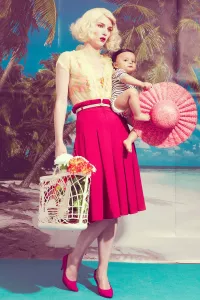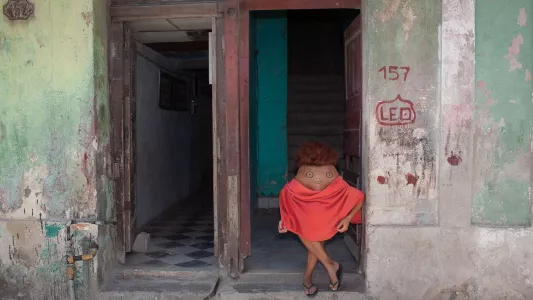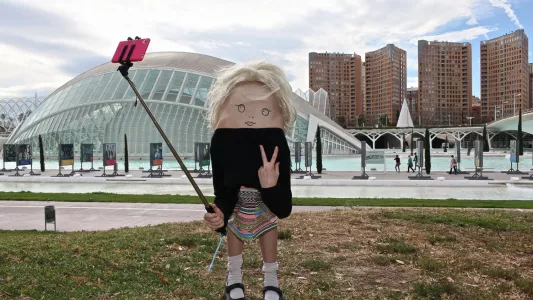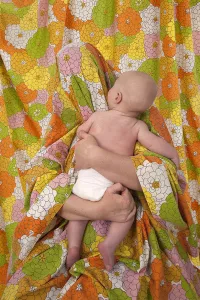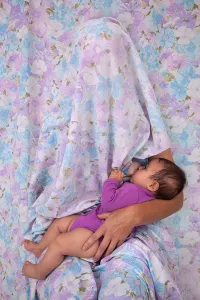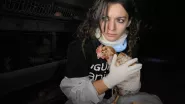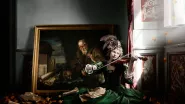In the first two installments of
The Female Gaze
I put forth the idea that the female gaze consists of work made by women with a female viewer in mind. Expressed through images that explore the desires, experiences and viewpoints of women outside of tightly structured gendered expectations, posing and male ego flattering. I’ve come to think of these images as atypical to mainstream image creation and consumption. In opposition to the famous sentiment spewed forth by Hans Hoffmann in "praise" of abstract expressionist Lee Krasner, “This is so good you wouldn’t know it was done by a woman”, these works could only be made by women. The photographers engaging in the female gaze manipulate the tools of the medium to undermine, repurpose, and redefine women within the public space of photography.
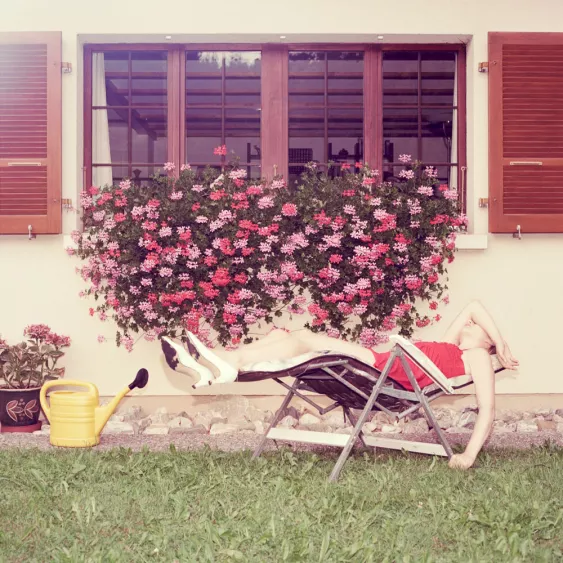
hails from the wilderness of Northern Ontario, Canada and has earned an international reputation for her ambiguous and cinematic images. Roy’s use of self portraiture allows her to create a “compelling, intimate universe inhabited by a multitude of diverse characters that explore enigmatic themes.” The women she imagines in the series A
utoportraits II
have an almost esoteric, suburban glamour that preys on the romanticism of fictionalized ideals while the dystopian realities break through the facade. The protagonists tend to have their backs to the viewer as if waiting or searching for something, often with a suggestion of danger, violence, or inner turmoil. Roy includes a recurring character who resembles a disillusioned or depressed Wonder Woman. As a whole the series reads as a malcontent or critique of traditional women spaces and the lies built into the promises they claim to provide.
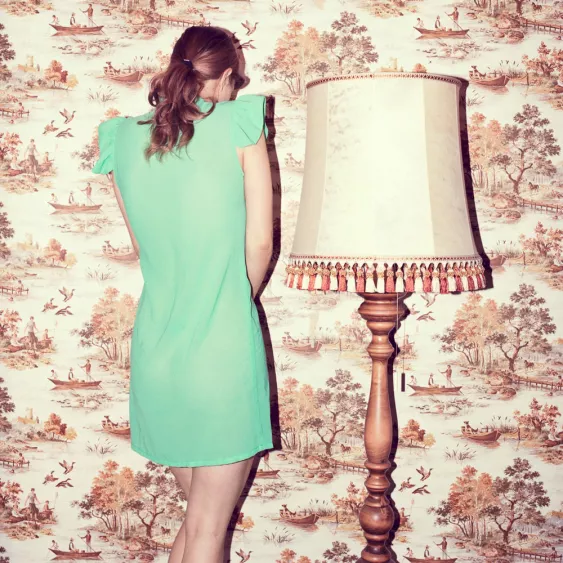
In
, Roy explores similar themes of female identity and discontent by photographing different characters in the same exact position, general pose, and contrived backdrop. Each character feels like a mannequin with their stiff pose, downward gaze, and perfect presentation. But, unlike the discussion in T
, Roy’s use of head canting and downward gaze feels less submissive and more broken, or questioning. As if each character is on the brink of an awakening or turning point. As if something is about to snap. It’s in this ability to imbue the subjects with subtle, but complex emotions that captures the viewers attention and relates her work to cinema.
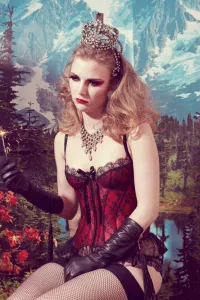
As a woman, looking at this series, I can’t help but see an expectation I have felt represented in each subject. The demure bride, the perky cheerleader, the studious assistant, dutiful maid, caring mother...each one unhappily embodying a traditional, unattainable ideal version of womanhood that we have seen countless times in advertising, cinema and literature, reinforced by cultural pressures. By using herself in each depiction, you get the effect of one woman being split into the multitude of expectations she feels pressure to perfect. As Roy stated in my conversation with her she is not “dealing with a form of meta-image making where [she is] trying to uncover the why/how of my relationship as a woman to my practice. It is simply my own personal exploration of a fantastical world in my head”.
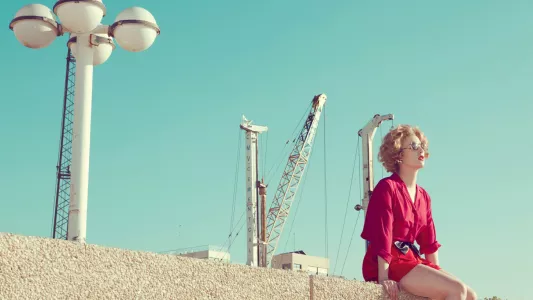
She is not trying to be political or controversial. She is "fascinated with exploring the boundaries of liminal spaces; whether spatial, temporal or psychological” and in doing so has harnessed her experience as a woman to create art that can’t help but speak to other women. She has tackled countless tropes of femininity and traditional western gender roles, without quantifying them. They all maintain equal value by repetitive posing and positioning. She removed the ability of us to place judgement on them and replaced it with interest in them.
Her work can be further explored in her upcoming book,
The Tourist
(published by Editions Andre Frere), which will be released this fall. I also highly recommend you check out her recent quarantine series,
Survivalist Failures
on Instagram
.
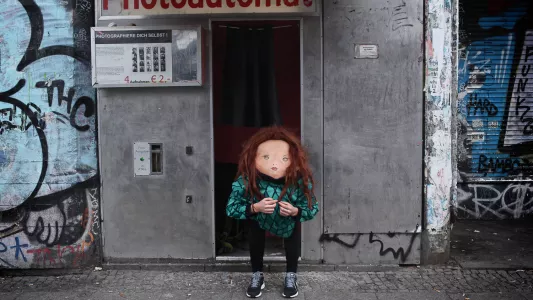
(
) is an interdisciplinary artist from Spain with training in illustration whose work often explores illusion and humor. When I came across her series
Secret Friends
, I uncharacteristically giggled into my phone and sent it to half my contacts. “Secret Friends are neither entirely human nor a species of their own, they inhabit a parallel world between the real and the surreal. The subjects become actors portraying themselves at home or outdoors, wearing their own clothes as a costume.” AnaHell poses her subjects bent over and then costumed to create, for lack of a better description, convincingly stylized potato people with simplistically rendered faces and cleverly manipulated environments.
© AnaHell, Secret Friends
“Her work is straightforward and sometimes humoristic and satirical as it often unmasks the absurdity present in the ordinary.” Although
Secret Friends
is a funny and pleasing illusion it also equalizes the human form. Each “friend” successfully eliminates the person forming them and creates a new being. It explores the abilities of the human body and not those bodies' social existence.
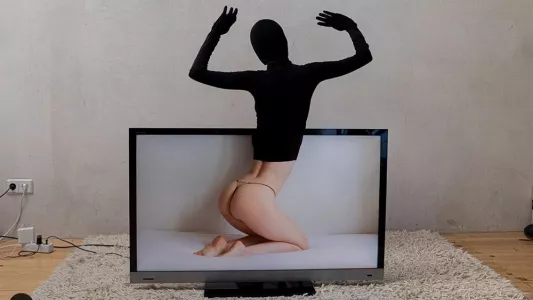
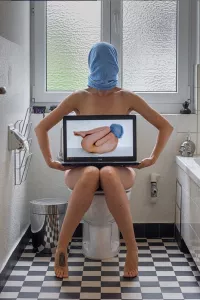
AnaHell also works in collaboration with Nathalie Dreier (
) on a self portrait project called
Red Rubber Road
(
). During this time of quarantine and isolation they have been exploring the idea of being together while apart as well as the relationship screens have played in staying connected. The screen is an object, the body becomes an object, but then the screen represents life and the body is defined by its relationship to the technology. Their mastery of manipulating form and knack for illusion produces touching, surreal, and relatable images that reflect the oddity of our joint experience in isolation and yearning for human companionship.
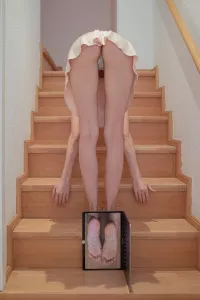
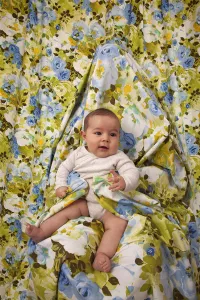
(
), is a New Mexico, USA based artist and educator who “explores delicate relationships - our existence as material and concept, the interweaving between two partners in love and the bond of parent and child.” Jacobs series
Hidden Mothers
, plays off of the Victorian era child photographs where the mother was hidden by a curtain while they held the baby still. This series was started as a reaction to the cultural dialogue around work-life balance. Jacobs chose to create similarly formal images as a “metaphor for the unrecognized physical and emotional work that mothers do to support and nurture their children in contemporary times”. In the images the mothers are covered by feminine, floral linens meant to hide them, while the loud patterns reveal their form.
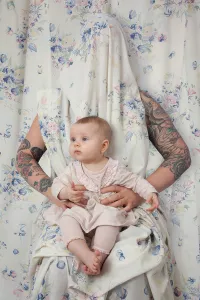
“There is a tension between hiding and revealing in the images: the mothers’ identities are obscured yet the vibrant sheets accentuate their form, while in other instances aspects of their identities are exposed. The interplay between hiding and revealing explores the complexities of motherhood and functions to illustrate the mutability of identity and in some cases an erasure of self.” Jacobs' work illustrates the sudden and poignant transition from woman to mother.
Another phase is women's direct relationship with age, functionality, and invisibility. Jacobs also points out that mothering is both personal and political with rising child care costs, unequal wages and wage dips, increased time commitments, burden of the second shift and cultural expectations of motherhood all requiring social and political change to rectify.
© Megan Jacobs, Hidden Mothers
As women our physicality is, regardless of intention, a component of any image we are in. There is power in understanding that nuanced relationship to the female form, art and the viewer. The sentiment that “your body is a battleground” (Barbara Kruger) is no less true today then in 1989. Having a female body in an image carries the weight of body politics. Megan Jacobs, AnaHell, Nathalie Dreier, and Kourtney Roy have, each in their own ways and with different intentions, used the female form as a platform for conversation and storytelling in a manner that surpasses the simplicity and hollowness of the tired male gaze. And the male gaze is tired. It’s exhausted. It’s exhausting. Let's let it rest.
